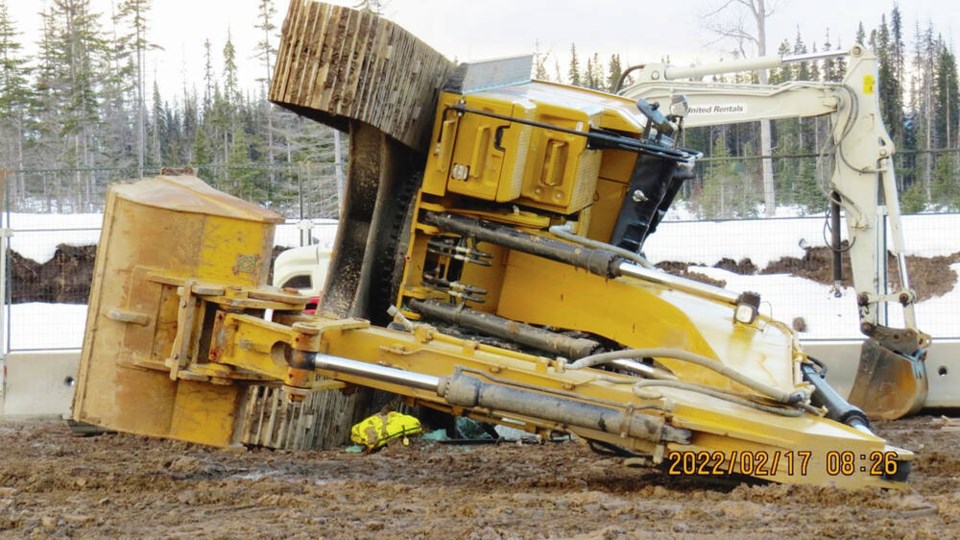A Wet’suwet’en hereditary leader said her community was “disheartened” by Thursday’s early morning attack on a Coastal GasLink work site that saw nine contractors and security guards threatened, and millions of dollars in damage to heavy machinery and buildings left behind.
“We certainly don’t, as Wet’suwet’en people, condone this type of action,” said Chief Wihaliy’te, whose English name is Theresa Tait-Day, in a statement distributed by the First Nations LNG Alliance, which describes itself as a collective of First Nations participating in LNG development.
RCMP have characterized the assault as a calculated and co-ordinated attack by 20 to 40 people. Coastal GasLink released images it said were captured by security cameras showing individuals wearing masks and dressed in camouflage, some armed with axes, who confronted the overnight crew as they fled.
The RCMP said the assailants commandeered heavy equipment at the site to ransack the site, overturning other machines and smashing buildings before leaving.
RCMP Chief Supt. Warren Brown said responding officers were confronted by six to eight assailants who threw torches, smoke bombs and other objects at them as they tried to clear trees that were felled across the road as barricades.
Police are working to identify suspects.
The site of Thursday’s incident, a remote work site some 69 kilometres down forest service roads southwest of the small town of Houston, is also a location of blockades against the project and police actions to clear them.
Wet’suwet’en hereditary chiefs opposing the pipeline sparked rallies and rail blockades across Canada in 2020. Coastal GasLink obtained an injunction against blockades, and Wet’suwet’en hereditary chiefs issued the company an eviction notice.
Hereditary Chief Na’moks, with those who opposed the development, told The Canadian Press by text message Friday that he wouldn’t comment on the incident until they had more information.
“All we know is no arrests or charges, and harassment of our camps continue,” he said.
Coastal GasLink’s $6.7-billion, 670-kilometre natural gas pipeline, intended to link with LNG Canada’s $18-billion liquefied natural gas plant being built on tidewater at Kitimat, does have the support of 20 elected First Nation governments along its route that have impact-benefit agreements with the company.
Maureen Luggi, elected chief of the Wet’suwet’en First Nation near Burns Lake, one of five communities in the larger Wet’suwet’en territory, said the public often misunderstands who opposes the project.
“My biggest concern is that this incident increases the division within our respective Wet’suwet’en communities, as well as our relationships with those who are non-Indigenous,” Luggi wrote in a response to emailed questions.
On Saturday, Luggi’s council sent out a statement condemning the attack “in the strongest possible terms,” and called on “those who are inviting violent non-Wet’suwet’en people into our territories to withdraw the invitations.”
Luggi offered an additional statement through the Carrier Sekani Tribal Council, saying that the incident “goes against Carrier Sekani values of respect for the land and each other.”
“This attack shocked our communities,” Luggi said in the statement. “These violent attacks are against our values. They not only left a great deal of property damage, but also has created a local environmental crisis due to the industrial fluids that were spilled due to the destruction.”
— With files from The Canadian Press



